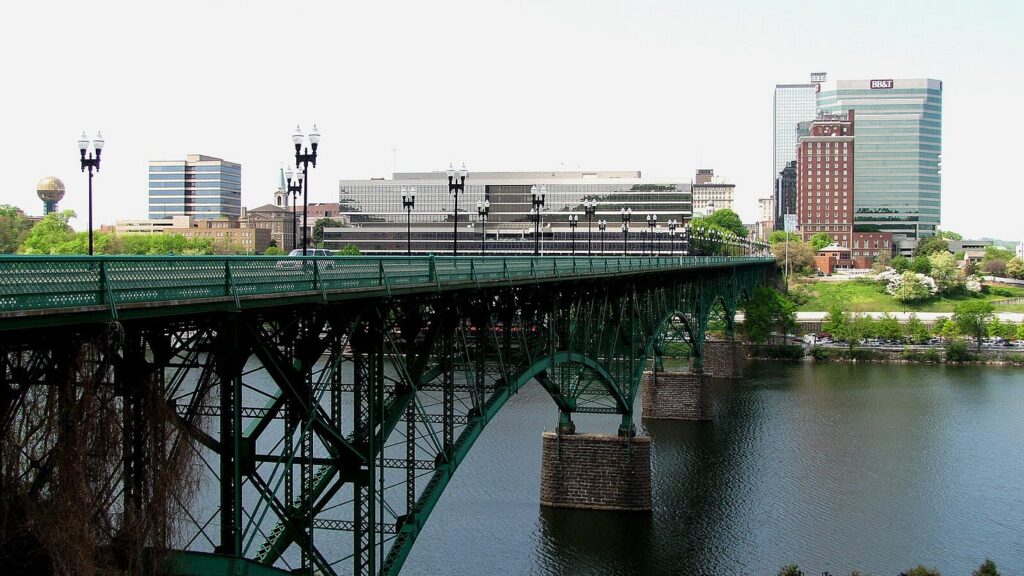Welcome to an adventure through the dynamic pulse of Gay Street and the flowing embrace of the Cumberland River in Nashville, Tennessee. This is where history and culture intertwine, creating a tapestry rich with stories and heritage. In the heart of downtown Nashville, Gay Street stands as a testament to centuries of evolution, while the Cumberland River remains a vital artery, nurturing the city’s growth and spirit. Whether you’re a history enthusiast, a lover of architecture, or simply curious about Nashville’s vibrant past and present, this exploration promises a delightful journey through time.
The Cumberland River: Nashville’s Lifeline
A Natural Marvel
The Cumberland River, stretching over 688 miles, is more than just a scenic waterway. Its meandering path through Tennessee has played a pivotal role in the region’s development. For centuries, the river served as a primary transportation route, carrying goods and people long before modern roads and railways existed.
Early Inhabitants and Trade
Before European settlers arrived, Native American tribes like the Cherokee and Shawnee navigated the Cumberland River, using it as a thoroughfare for trade and travel. The river’s fertile banks provided ample resources for these communities, supporting fishing, hunting, and agriculture.
European Settlement and Expansion
In the late 18th century, European settlers recognized the Cumberland River’s potential. It became a crucial conduit for moving agricultural products, especially during the westward expansion. The establishment of forts and trading posts along the riverbanks accelerated the growth of settlements, eventually leading to the founding of Nashville in 1779.
Gay Street: From Early Days to Modern Glory
Origins and Early Development
Gay Street’s journey began in the early 19th century. Initially, it was a modest path but quickly transformed into a bustling thoroughfare. Its prime location near the Cumberland River made it an ideal spot for trade and commerce. Early settlers and entrepreneurs set up shops, banks, and markets, turning the street into a vibrant commercial hub.
Architectural Evolution
As Nashville grew, so did the architectural splendor of Gay Street. By the mid-19th century, the street was adorned with impressive buildings reflecting Greek Revival and Victorian styles. Grand facades, intricate ironwork, and elaborate cornices characterized the street’s aesthetic, showcasing the city’s prosperity and aspirations.
Cultural Flourish in the 20th Century
The 20th century ushered in a new era for Gay Street. It became a center for social gatherings, entertainment, and the arts. The street’s vibrant energy attracted artists, musicians, and creatives, contributing to Nashville’s burgeoning reputation as a cultural capital. Theaters, galleries, and clubs sprang up, making Gay Street a lively destination for locals and visitors alike.
The Confluence of Commerce and Culture
Gay Street’s Role in Nashville’s Economy
Gay Street played a significant role in shaping Nashville’s economic landscape. The street’s proximity to the Cumberland River facilitated the easy movement of goods, boosting trade and commerce. Merchants and traders thrived, turning Nashville into a key economic hub in the region.
The River’s Economic Impact
The Cumberland River complemented Gay Street’s economic activities by providing a reliable transportation route. Steamboats and barges transported agricultural products, coal, and other goods, connecting Nashville to other major cities. This synergy between river and street fostered economic growth, making Nashville a thriving commercial center.
Architectural Gems of Gay Street
Historic Landmarks
Gay Street is home to several historic landmarks that tell the story of Nashville’s architectural evolution. The Customs House, an imposing structure built in the late 19th century, stands as a testament to the grandeur of that era. Its Gothic Revival design, complete with turrets and spires, reflects the architectural ambitions of the time.
Modern Marvels
In addition to its historic buildings, Gay Street boasts modern architectural marvels that blend seamlessly with its historical context. Contemporary structures, with their sleek designs and innovative materials, coexist harmoniously with their older counterparts, creating a dynamic urban landscape.
The Cumberland River’s Cultural Significance
A Source of Inspiration
The Cumberland River has long been a source of inspiration for artists, musicians, and writers. Its tranquil waters and scenic beauty have featured prominently in paintings, songs, and literature, capturing the imagination of countless creatives. The river’s presence in Nashville’s cultural narrative is as significant as its historical role.
Riverfront Development
In recent decades, the Nashville riverfront has undergone significant development, transforming into a vibrant public space. Parks, promenades, and recreational facilities now line the riverbanks, offering residents and visitors a place to relax, exercise, and enjoy the natural beauty of the Cumberland River. This revitalization has further cemented the river’s place in the city’s cultural life.
Gay Street’s Vibrant Present
A Hub for Arts and Entertainment
Today, Gay Street continues to be a focal point for Nashville’s arts and entertainment scene. The street is lined with theaters, galleries, and music venues that showcase a diverse array of performances and exhibitions. From Broadway shows to local art displays, Gay Street offers a rich cultural experience for everyone.
Dining and Nightlife
Gay Street is also known for its vibrant dining and nightlife. A plethora of restaurants, bars, and cafes cater to a wide range of tastes, offering everything from Southern comfort food to international cuisine. The street comes alive at night, with live music performances, bustling bars, and an energetic atmosphere that reflects Nashville’s dynamic spirit.
Exploring Gay Street and the Cumberland River Today
Walking Tours and Historical Insights
One of the best ways to explore Gay Street and the Cumberland River is through walking tours. These guided excursions offer fascinating insights into the area’s history, architecture, and cultural evolution. Whether you’re interested in historic buildings or modern developments, a walking tour provides a comprehensive view of this vibrant part of Nashville.
River Cruises and Outdoor Activities
For a different perspective, consider taking a river cruise on the Cumberland River. These cruises offer stunning views of the Nashville skyline and provide a relaxing way to experience the river’s natural beauty. Additionally, outdoor enthusiasts can enjoy activities like kayaking, fishing, and picnicking along the riverbanks, making it a perfect destination for nature lovers.
Preserving the Past, Embracing the Future
Historical Preservation Efforts
Preserving the rich history of Gay Street and the Cumberland River is crucial for maintaining Nashville’s cultural heritage. Various organizations and community groups are dedicated to protecting historic buildings and promoting awareness of the area’s historical significance. These efforts ensure that future generations can appreciate and learn from Nashville’s past.
Sustainable Development
As Nashville continues to grow, sustainable development practices are essential for balancing modernization with historical preservation. Initiatives focused on green spaces, environmentally friendly construction, and community engagement are vital for maintaining the area’s charm while accommodating the city’s evolving needs.
Conclusion
Gay Street and the Cumberland River are more than just physical landmarks in Nashville; they are integral parts of the city’s identity and soul. From their early days as crucial hubs of trade and transportation to their current roles as vibrant centers of culture and community, these two elements of Nashville’s landscape continue to shape the city’s story. Whether you’re strolling down Gay Street or gazing out over the Cumberland River, you’re experiencing the living history of Nashville, a city where the past and present converge in a harmonious blend.







